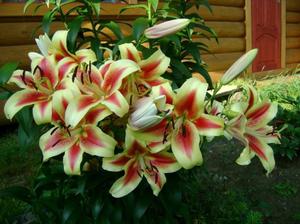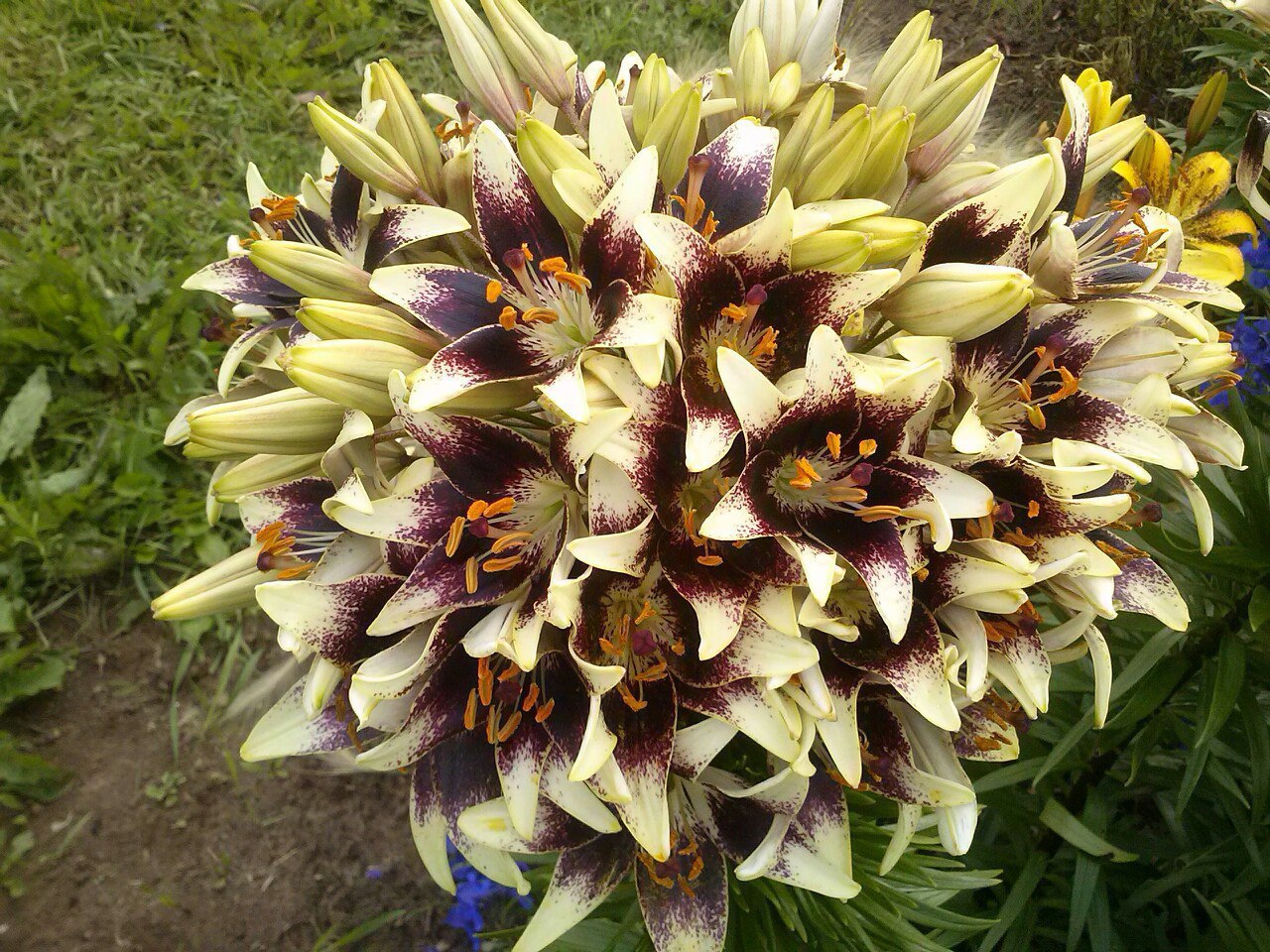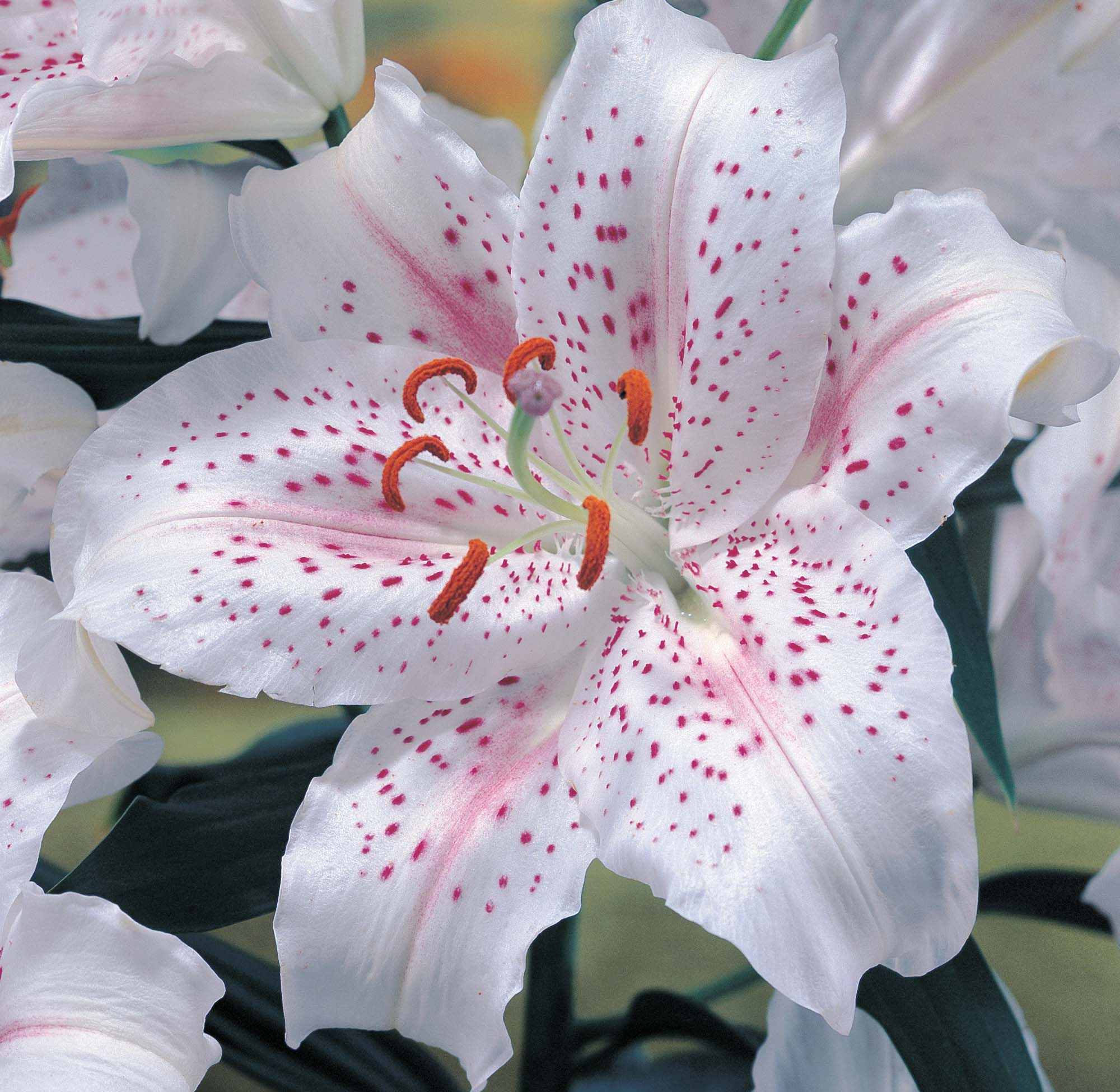Most domestic gardeners quickly decide which flowers to plant on the site. Lilies are one of the popular plants that attract attention with their delicate and attractive appearance. In addition, their cultivation does not cause much trouble to the summer resident, because over the years that this plant has been cultivated in our country, many have managed to make sure of its unpretentiousness.
Expecting the beautiful flowering of lilies in the spring, many issues will need to be resolved. And, above all, you have to provide this plant with proper care.
Content
Lily: characteristics of the species
Lily is one of the interesting representatives of the Liliaceae family, which is grown as a perennial plant. As he grows a straight tall stem is formeddecorated with small glossy leaves. Lily inflorescences differ in a wide variety of forms, which can be cup-shaped, funnel-shaped, stellate or bell-shaped. A characteristic feature of the plant is the presence of 6 elongated petals and the same number of stamens.
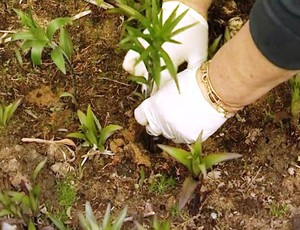 If we turn to the name of the plant, then it can be translated as "completely white". However, experienced gardeners know that lily today can have a wide variety of shades: yellow, orange, red, lilac, lilac, pink. Special summer residents show interest in varieties with a combined color... In such plants, a single-tiered root system and a bulb are formed underground. Moreover, the latter provides the plant with the necessary nutrients and at the same time serves as a reproductive organ.
If we turn to the name of the plant, then it can be translated as "completely white". However, experienced gardeners know that lily today can have a wide variety of shades: yellow, orange, red, lilac, lilac, pink. Special summer residents show interest in varieties with a combined color... In such plants, a single-tiered root system and a bulb are formed underground. Moreover, the latter provides the plant with the necessary nutrients and at the same time serves as a reproductive organ.
Choosing a place for planting lilies in the spring in the ground
Before you start planting lilies in a permanent place, you should decide on the site where you will grow it. These flowers thrive best in well-lit areas, sheltered from the wind.
After you solve this issue, they begin to prepare the land: for this, the site needs to be dug up and the remnants of the roots of other plants removed. As one of the options, planting lilies can be carried out in a flowerbed where there are already other flowering plants. This is no way will not affect the growth and flowering of lilies... But here, too, you need to pay attention to the “neighbors”, surrounded by the lily. They should not be too tall, otherwise the lily will receive shade from them. With this in mind, it is not recommended to choose for planting this culture and places under trees and shrubs.
When to plant lilies?
Any budding gardener knows that plants are planted in spring. This rule can be followed when choosing the time for planting lilies. Although they can be planted in mid-fall, it all depends on the personal preference of the grower.
 If you are in no hurry, then it is best to plan the planting of flowers in the fall. At this time of the year, the weather is relatively warm and there is a sufficient amount of moisture in the soil, therefore optimal conditions are provided for the plant for rooting. Under such conditions, the likelihood of survival of this culture increases.Thus, in the southern regions of our country, these flowers are best planted in October.
If you are in no hurry, then it is best to plan the planting of flowers in the fall. At this time of the year, the weather is relatively warm and there is a sufficient amount of moisture in the soil, therefore optimal conditions are provided for the plant for rooting. Under such conditions, the likelihood of survival of this culture increases.Thus, in the southern regions of our country, these flowers are best planted in October.
But keep in mind that many varieties are for spring planting. Therefore, before making a final decision, read the characteristics of your chosen variety.
Preparing the soil for lilies
Planting and caring for flowers outdoors should be carried out in accordance with the rules, but in many ways the final result depends on where it was decided to plant the lily bulbs.
Planting lilies in dry areas is not recommended. For this reason, it is necessary to choose a place where there is soil that allows moisture to pass through well. Among the varieties of lilies there are many that feel comfortable on fertile soilcharacterized by high moisture permeability. However, in recent years, breeders have been able to obtain new varieties that can grow well in dry and swampy areas. However, it is not recommended to try to grow these flowers in heavy loamy soils and salt marshes.
Regardless of the type of soil that you have chosen for planting lily bulbs, keep in mind that you will have to feed in any case.
- for these purposes, you can use peat fertilizers, humus or rotted compost at the rate of one bucket per 1 sq. m .;
- if you chose a site where sandy impurities predominate, then to increase soil fertility, you can apply phosphorus-potassium fertilizers at the rate of 100 grams per 1 sq. m.
When planting, attention must be paid to the acidity level of the soil: it is optimal if it has an alkaline or slightly acidic reaction. These flowers will not thrive in too acidic environments. To eliminate this disadvantage, it is necessary to add wood ash, limestone or chalk to the soil at the rate of 200-300 grams per 1 sq. m.
Planting lilies in open ground
When planting lilies in spring, it is very important to choose the most appropriate moment. It is recommended to schedule this activity when the last wave of frost has passed, but the weather is relatively warm and there is no drought. Consider the specifics of your region, since in each it is best to plant lily bulbs in the ground at their own time.
Preparing for landing
Preparation of lily bulbs requires the following operations:
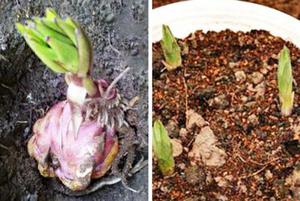 first of all, it is necessary to sort the bulbs, rejecting planting material with signs of damage;
first of all, it is necessary to sort the bulbs, rejecting planting material with signs of damage;- after you have viable specimens, you need to remove the flower scales from them;
- then the bulbs must be rinsed in a solution of potassium permanganate or foundation.
It is also equally important to correctly determine the planting depth of the bulb. To do this, you need to focus on the type of soil in which you will plant it:
- when planting in heavy soils, small bulbs are buried by 5-6 cm, and large ones - 13-16 cm;
- if planting is carried out in loose soil, then the depth of immersion in the ground of the bulbs should be 2-4 cm more than in the previous case.
At the end of all planting operations for lilies, fertilizing is carried out using organic and mineral fertilizers. During the autumn planting of bulbs, you you will definitely have to provide a protective cover for the flower bed from dry leaves, and pour a layer of soil on top. This will help the flowers survive the winter better without damage.
Care principles
The determining factor on which the development of lilies in the open field depends is the maintenance of the soil in a moist state. Therefore, during care, when determining the time for watering, it is necessary to focus on the condition of the soil. During a drought, watering should be carried out more often, and during the period of precipitation, they can be completely excluded. Most effectively water the plants "at the root"... But the surface irrigation method is not recommended, as your flowers may suffer from this. Many gardeners often combine watering with top dressing.
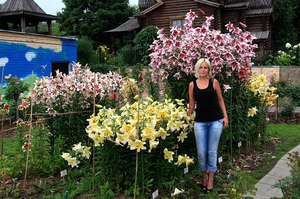 In the first year of life after planting, the lily sprouts need special attention, since they remain weak for now.To create favorable conditions for development, it is necessary to cut off all the buds. As a rule, flowering requires a lot of energy from the plant, and if young shoots are deprived of all nutrient reserves during the summer season, then there is a high risk that they will not survive the winter. But, if the winter cold does not harm the sprouts, then in the second and subsequent years you will probably wait for the abundant flowering of lilies.
In the first year of life after planting, the lily sprouts need special attention, since they remain weak for now.To create favorable conditions for development, it is necessary to cut off all the buds. As a rule, flowering requires a lot of energy from the plant, and if young shoots are deprived of all nutrient reserves during the summer season, then there is a high risk that they will not survive the winter. But, if the winter cold does not harm the sprouts, then in the second and subsequent years you will probably wait for the abundant flowering of lilies.
In the fourth year, flowering often becomes less intense. This can be explained as a signal that the culture is lacking in nutrients. Plants that have been growing on the site for five years can begin to be propagated and transplanted to a new location.
Conclusion
Among domestic gardeners, one can hardly find those who would not have heard of lilies. These amazingly delicate flowers attract many gardeners with their appearance, so there is nothing strange in the fact that these plants can often be found in the plots. Lilies are also grown because of the unpretentiousness of these flowers. And for this even no special skills requiredto acquire a colorful flower bed of these plants.
All that is required from a gardener is to get acquainted with the agricultural technology of growing these ornamental plants and follow all the rules exactly. It is important for any gardener to knowwhen to plant these flowers in the ground, because it depends on how quickly they can take root and start blooming.
